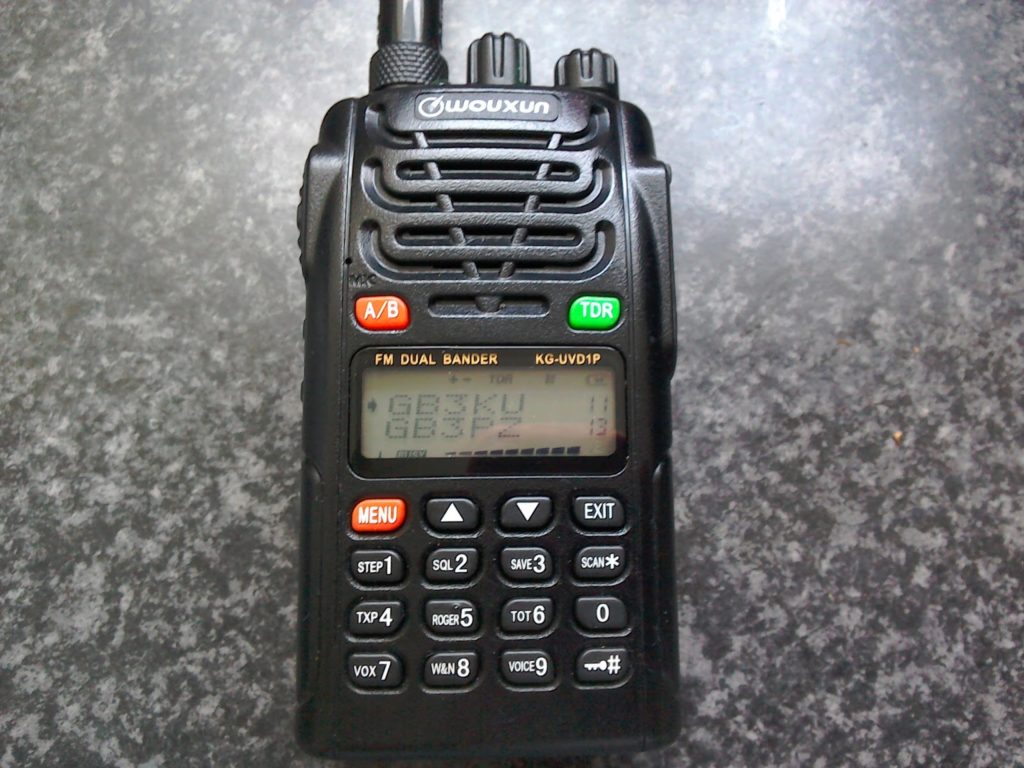Ahoj, nakoľko sa množia ohlasy ľudí z východného Slovenska s hluchými stanicami Wouxun KG-UVD1 pokiaľ prijímajú UHF, tak sa pokúsim predostrieť čo je príčinou „poruchy“. Porucha sa prejavuje hlavne pri príjme frekvencie 446MHz ale čiastočne aj pri príjme frekvencií v okolí 439 MHz.
Čo je príčinou?
Príčinou je zlá konštrukcia tejto ručnej stanice, ktorá je lacná a až príliš citlivá, čo je príjemné, ale na druhu stranu má veľmi slabé potlačenie zrkadlovej frekvencie na 440MHz len o 30dB (podľa meraní na http://www.wouxun.us/Manuals/QSTReview.pdf).
5. apríla spustil Towercom v Košiciach z vysielača Heringeš DVB-T vysielač na K25 s výkonom 16,9kW ERP. Od 28. apríla spustil Towercom DVB-T vysielač na K25 s výkonom 31,5kW ERP z Dubníka. A ďalšie DVB-T na K25 plánujú spustiť 11.5. v Prešove, 12.5. v Kráľovskom Chlmci, 12.5. v Snine…
A čo má DVB-T spoločné s ohluchnutím KGUVD1P či už terajším alebo budúcim na východnom Slovensku? No práve kanál 25, čo je frekvencia od 502 do 510 MHz. Prvá medzifrekvencia tajto rúčky je 29,25MHz. Oscilátor prijímača pre 1. MF napríklad pri príjme 446MHz teda kmitá v KGUVD1P o 29,25MHz vyššie, čo je 475,25. Zmiešavač ale spracuváva rozdielový 446MHz ale aj súčtový 504,5MHz signál od signálu z oscilátora. Súčtový signál by mal byt potlačený vstupnými obvodmi, tieto však má KGUVD1P biedne. 504,5 MHz leží priamo v kanáli 25 (502-510 MHz). Možno si poviete, veď potlačenie 30dB by malo stačiť…
S trochou matematiky si prevedieme 17kW z Heringeša na 42,3dBW. Keď odpočítame od 42,3dBW 30dB potlačenia na zrkadlovej frekvencii dostávame 12,3dBW, čo sa dá chápať aj ako 16W rušenia na žiadanej frekvencii. Teraz je jasné, že pretlačiť 16W zostavajúcimi na zmiešavači z DVB-T signálu užitočným signálom 0,5W z PMR stanice ktorú na tejto stanici len počúvame, bude možné len vo väčšej vzdialenosti od DVB-T vysielača, čo môže byť až desiatky km pri priamom výhľade na DVB-T vysielač, alebo za prekážkou brániacou v jeho príjme alebo len na veľmi krátke vzdialenosti, niekedy len rádovo v stovkách metrov.
Zatiaľ sme sa bavili o počúvaní na frekvencii 446MHz, bohužiaľ však v blízkosti DVB-T vysielačov na K25 v jednotkách km dochádza aj k miernemu zhoršeniu citlivosti vplyvom preťaženia zmiešavača v rozsahu 438-440MHz, kde majú výstup rádioamatérske prevádzače v pásme 70cm. Pri príjme miestneho prevádzača so silným signálom to ale až tak nevadí.
Aké je riešenie?
Najjednoduchšie riešenie je rádio predať alebo nekupovať. Ďalším z možných riešení je medzi anténu a rádio zaradiť dostatočne ostrý odlaďovací filter, avšak len pokiaľ používame externú anténu – na rúčke si neviem takýto filter predstaviť a nehovoriac o možnom rozladení antény takýmto medzičlánkom. Filter by mal byt odlaďovací, pretože sa jedna o dvojpásmovú stanicu.
Netýka sa Vás to?
Myslíte si, že v iných regiónoch sa Vás tento problém s touto stanicou netýka? Nemusí to byť pravda, na TUSR je v súčasnosti veľa žiadostí o pridelenie lokálneho DVB-T multiplexu a nie je vylúčené, že práve uprostred vášho sídliska vyrastie DVB-T vysielač s výkonom do 5kW. Preto prikladám tabuľku DVB-T kanálov a k nim prislúchajúce vstupné frekvencie, kde sa môže problém prejaviť:
K21 470-478MHz môže ovplyvniť príjem 411,5-419,5MHz
K22 478-486MHz môže ovplyvniť príjem 419,5-427,5MHz
K23 486-494MHz môže ovplyvniť príjem 427,5-435,5 (direktne FM kanály a výstupy prevádzačov v Maďarsku)
K24 494-502MHz môže ovplyvniť príjem 435,5-443,5 (výstupy FM prevádzačov)
K25 502-510MHz môže ovplyvniť príjem 443,5-451,5 (pásmo PMR)
K26 510-518MHz môže ovplyvniť príjem 451,5-459,5
K27 518-526MHz môže ovplyvniť príjem 459,5-467,5
K28 526-534MHz môže ovplyvniť príjem 467,5-475,5
Plány spustenia celoplošných DVB-T:
K21 – Zobor, Sitno, Levice, Šťúrovo, Nove Zámky
K24 – SNV-Grajnar, Poprad, Sp. Podhradie, Svit
K25 – KE-Heringeš, KE-Dubník, Prešov, Čaňa, Inovce-Poľana, Krompachy-Plejsy, Kr. Chlmec, Medzev, Moldava N.B, Obišovce, O. Matiašovce, Snina, Trebišov, Vihorlat, MI-Zalužice
K26 – Prievidza, Námestovo, Ružomberok
K27 – Kamzík, Borský Mikuláš, Brezová P.B., D. Streda, Trnava, Revúca, Rožňava, Slaveč
Informácie som čerpal z http://www.power.szm.com/dvb-t/dvb-t_03.xls
Žiadosti o pridelenie lokálneho MUXu nájdete na stránkach TUSR: http://www.teleoff.gov.sk/data/files/17881.xls, ide však o žiadosti, teda frekvencie môžu ale nemusia byt pridelené. Vyberiem z nášho rádioamatérskeho pohľadu najkritickejšie kanály:
K23 – Liptovsky Mikuláš, D. Streda, Šamorín, V. Meder, D. Kubín,
K24 – Trenčín
V okolí Bratislavy teda hrozí, že ak sa rakúska strana rozhodne zriadiť DVB-T dokrývač svojho prvého muxu vysielaného na K24 niekde nad Hainburgom, tak môžeme čínske stanice zahodiť, ale na druhej strane, je to malo pravdepodobne, nakoľko majú sieť vybudovanú a nič v Bratislave a okolí tu nemôže kvôli kolízii s Rakúskom začať vysielať. Na K27 sa však v Bratislave vysielať bude, takže na príjem profi služieb v pasme 459,5-467,5 touto stanicou zabudnite a kúpte radšej niečo iné. Ak prejde koordinácia pre K26, čo po vypnutí ČT1 z Páľavy asi prejde, tak v BA bude DVB-T aj na K26…
Snáď som dostatočne zrozumiteľne osvetlil prečo odrazu väčšina čínskych UHF staníc na východe ohluchla.
Tono OM1AEG
